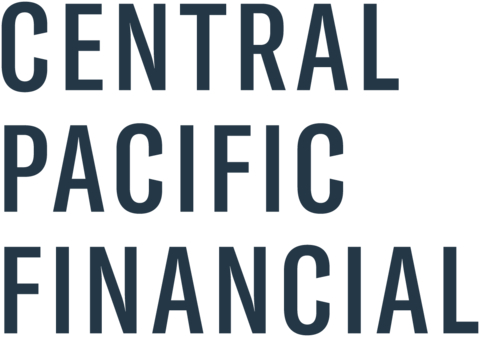HONOLULU--(BUSINESS WIRE)--Ralph Mesick, a veteran Hawaii banker with nearly 40 years of financial services experience, has joined Central Pacific Bank (CPB) as its Senior Executive Vice President and Chief Risk Officer, according to an announcement today by Arnold Martines, CPB chairman, president, and chief executive officer.
“We want to be sure we are prepared for the increase in regulatory oversight the banking industry is currently going through,” said Martines. “Ralph will play a key role in helping us successfully manage the changing regulatory environment and strengthen our overall risk management infrastructure.”
At the bank, Mesick will oversee key risk functions and be a member of the bank’s Executive Committee.
“I am grateful to have this opportunity to join Central Pacific Bank,” said Mesick. “The bank was started for our community, by our community, and I look forward to helping build our capacity to best serve all of our stakeholders in that very spirit.”
Mesick holds a Bachelor of Business Administration from the University of Hawaii-Manoa as well as a Master of Business Administration with a concentration in Banking, Finance, and Investments from the University of Wisconsin-Madison. He also completed an Advanced Risk Management Program at Wharton School at the University of Pennsylvania. In addition, he graduated at the top of his recruitment class and is a former police officer with the Honolulu Police Department.
Active in community affairs, he is a former Chairman of the State of Hawaii Housing Finance and Development Corporation, the Hawaii District Council of the Urban Land Institute, and the Hawaii Community Reinvestment Corporation. He is a past Regent of Chaminade University and served on the board of the Boys and Girls Club of Hawaii, the Saint Francis Health Care System, and the Kapiolani Hospital Foundation. Mesick currently serves on the board of HomeAid Hawaii, a non-profit builder that focuses on the homeless and is engaged with initiatives to support residents displaced by the wildfires in Maui. He is a trustee at Saint Louis School and a member of the finance council for the Roman Catholic Church in Hawaii, Diocese of Honolulu.
About Central Pacific Financial Corp.
Central Pacific Financial Corp. is a Hawaii-based bank holding company with approximately $7.39 billion in assets as of June 30, 2024. Central Pacific Bank, its primary subsidiary, operates 27 branches and 55 ATMs in the State of Hawaii. Central Pacific Financial Corp. is traded on the New York Stock Exchange (NYSE) under the symbol "CPF." For additional information, please visit: cpb.bank
Equal Housing Lender
Member FDIC
CPF Listed NYSE
Forward-Looking Statements
This document and any accompanying oral presentation may contain forward-looking statements ("FLS") concerning: projections of revenues, expenses, income or loss, earnings or loss per share, capital expenditures, payment or nonpayment of dividends, capital position, credit losses, net interest margin or other financial items; statements of plans, objectives and expectations of Central Pacific Financial Corp. (the "Company") or its management or Board of Directors, including those relating to business plans, use of capital resources, products or services and regulatory developments and regulatory actions; statements of future economic performance including anticipated performance results from our business initiatives; or any statements of the assumptions underlying or relating to any of the foregoing. Words such as "believe," "plan," "anticipate," "seek," "expect," "intend," "forecast," "hope," "target," "continue," "remain," "estimate," "will," "should," "may" and other similar expressions are intended to identify FLS but are not the exclusive means of identifying such statements.
While we believe that our FLS and the assumptions underlying them are reasonably based, such statements and assumptions are by their nature subject to risks and uncertainties, and thus could later prove to be inaccurate or incorrect. Accordingly, actual results could differ materially from those statements or projections for a variety of reasons, including, but not limited to: the effects of inflation and interest rate fluctuations; the adverse effects of recent bank failures and the potential impact of such developments on customer confidence, deposit behavior, liquidity and regulatory responses thereto; the adverse effects of the COVID-19 pandemic virus (and its variants) and other pandemic viruses on local, national and international economies, including, but not limited to, the adverse impact on tourism and construction in the State of Hawaii, our borrowers, customers, third-party contractors, vendors and employees, as well as the effects of government programs and initiatives in response thereto; supply chain disruptions; the increase in inventory or adverse conditions in the real estate market and deterioration in the construction industry; adverse changes in the financial performance and/or condition of our borrowers and, as a result, increased loan delinquency rates, deterioration in asset quality, and losses in our loan portfolio; the impact of local, national, and international economies and events (including natural disasters such as wildfires, volcanic eruptions, hurricanes, tsunamis, storms, and earthquakes) on the Company's business and operations and on tourism, the military, and other major industries operating within the Hawaii market and any other markets in which the Company does business; deterioration or malaise in domestic economic conditions, including any destabilization in the financial industry and deterioration of the real estate market, as well as the impact of declining levels of consumer and business confidence in the state of the economy in general and in financial institutions in particular; changes in estimates of future reserve requirements based upon the periodic review thereof under relevant regulatory and accounting requirements; the impact of the Dodd-Frank Wall Street Reform and Consumer Protection Act, changes in capital standards, other regulatory reform and federal and state legislation, including but not limited to regulations promulgated by the Consumer Financial Protection Bureau, government-sponsored enterprise reform, and any related rules and regulations which affect our business operations and competitiveness; the costs and effects of legal and regulatory developments, including legal proceedings and lawsuits we are or may become subject to, or regulatory or other governmental inquiries and proceedings and the resolution thereof; the results of regulatory examinations or reviews and the effect of, and our ability to comply with, any regulations or regulatory orders or actions we are or may become subject to, and the effect of any recurring or special FDIC assessments; the effect of changes in accounting policies and practices, as may be adopted by the regulatory agencies, as well as the Public Company Accounting Oversight Board, the Financial Accounting Standards Board and other accounting standard setters and the cost and resources required to implement such changes; the effects of and changes in trade, monetary and fiscal policies and laws, including the interest rate policies of the Board of Governors of the Federal Reserve System; securities market and monetary fluctuations, including the impact resulting from the elimination of the London Interbank Offered Rate Index; negative trends in our market capitalization and adverse changes in the price of the Company's common stock; the effects of any acquisitions or dispositions we may make; political instability; acts of war or terrorism; changes in consumer spending, borrowings and savings habits; technological changes and developments; cybersecurity and data privacy breaches and the consequence therefrom; failure to maintain effective internal control over financial reporting or disclosure controls and procedures; our ability to address deficiencies in our internal controls over financial reporting or disclosure controls and procedures; changes in the competitive environment among financial holding companies and other financial service providers; our ability to successfully implement our initiatives to lower our efficiency ratio; our ability to attract and retain key personnel; changes in our personnel, organization, compensation and benefit plans; our ability to successfully implement and achieve the objectives of our Banking-as-a-Service initiatives, including adoption of the initiatives by customers and risks faced by any of our bank collaborations including reputational and regulatory risk; and our success at managing the risks involved in the foregoing items.
For further information with respect to factors that could cause actual results to materially differ from the expectations or projections stated in the FLS, please see the Company's publicly available Securities and Exchange Commission filings, including the Company's Form 10-K for the last fiscal year and, in particular, the discussion of "Risk Factors" set forth therein. We urge investors to consider all of these factors carefully in evaluating the FLS contained in this document. FLS speak only as of the date on which such statements are made. We undertake no obligation to update any FLS to reflect events or circumstances after the date on which such statements are made, or to reflect the occurrence of unanticipated events except as required by law.




